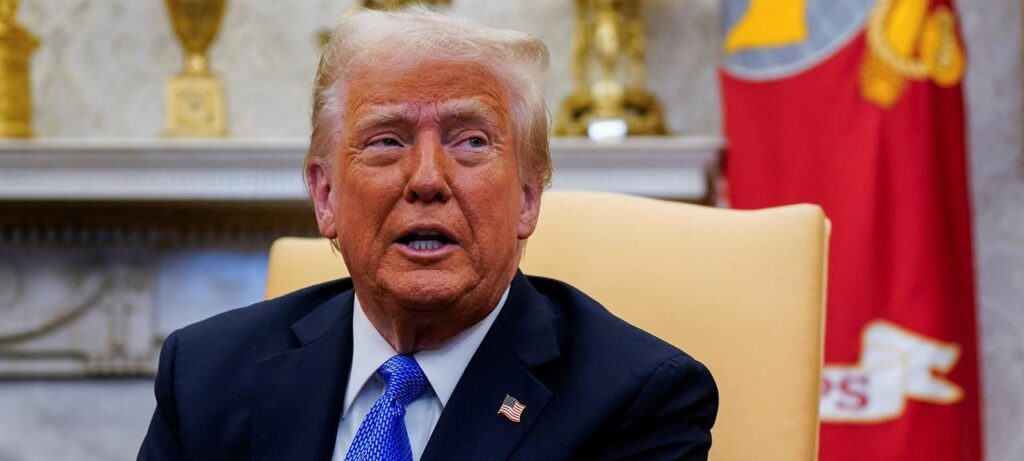The battle to sway voters over former President Donald Trump’s latest legislative proposal, dubbed the “big, beautiful bill,” is officially underway. As Trump rallies his base and outlines the ambitious measures contained within the plan, political analysts and opponents are gearing up for a contentious debate that could shape the landscape ahead of upcoming elections. This article examines the key components of the bill, the strategies employed by Trump and his advocates to win public support, and the counterarguments posed by critics wary of its implications.
The Battle for Voter Support Intensifies Around Trump’s Signature Legislation
As the midterm elections approach, political strategists from both parties are investing heavily in messaging campaigns centered around former President Trump’s landmark legislation. Supporters hail it as a transformative policy package aimed at boosting economic growth and enhancing national security, dubbing it the “big, beautiful bill” that promises tangible benefits for American families. On the other side, critics argue that the bill’s sweeping measures could exacerbate inflation and threaten social programs, making the fight for public opinion increasingly contentious.
Key points fueling the debate include:
- Economic Impact: Proponents point to job creation and tax incentives as cornerstones of the legislation’s appeal.
- Healthcare Reforms: The bill’s adjustments to Medicare and prescription drug pricing remain polarizing.
- Infrastructure Investments: Critics question the long-term funding mechanisms and debt implications.
- National Security Enhancements: Supporters emphasize stricter border controls and military funding increases.
| Aspect | Supporters’ View | Opponents’ View |
|---|---|---|
| Job Creation | Projected increase by 2 million over 5 years | Uncertain; risks favoring corporations over workers |
| Tax Policy | Incentivizes small business growth | Potentially increases deficit |
| Healthcare | Improves drug affordability | May cut critical funding for vulnerable groups |
Analyzing the Political and Economic Implications of the Big Beautiful Bill
The proposed legislation, branded by Trump as the “big, beautiful bill,” aims to reshape the economic landscape with sweeping reforms that touch on taxation, infrastructure spending, and regulatory adjustments. Supporters argue that the bill will invigorate growth by lowering corporate taxes and boosting job creation, especially in manufacturing and energy sectors. Critics, however, warn that it could exacerbate income inequality and inflate the national deficit, potentially destabilizing the economy. The battle over this bill demonstrates a deep ideological divide, with political leaders leveraging extensive lobbying efforts and high-stakes media campaigns to win public favor ahead of the upcoming elections.
Economic analysts are closely dissecting key components of the bill, highlighting several pivotal elements:
- Tax Cuts: Proposals include a reduction in corporate tax rates from 25% to 20%, alongside incentives for small businesses.
- Infrastructure Investment: A $500 billion boost in federal funding aimed at modernizing transportation and energy grids.
- Regulatory Reform: Measures to streamline environmental and financial regulations to encourage business growth.
| Policy Area | Projected Impact | Political Support |
|---|---|---|
| Corporate Tax | +5% GDP growth | High among Republicans |
| Infrastructure | Creation of 2 million jobs | Bipartisan but cautious |
| Regulation | Increased business investment | Divides along party lines |
Strategic Messaging and Grassroots Efforts Crucial to Swaying Public Opinion
In the highly contested arena surrounding Trump’s latest legislative proposal, grassroots campaigns have taken center stage, employing a blend of personalized outreach and digital mobilization to shift public perception. These efforts underscore the importance of connecting with voters on a local level through community meetings, social media engagement, and targeted mailers that distill complex policy details into relatable, emotionally resonant messages. By framing the bill as a “big, beautiful” opportunity for economic revitalization and job creation, supporters aim to bypass traditional partisan messaging and appeal directly to individuals’ aspirations.
Behind the scenes, strategists are crafting multifaceted communication plans that include:
- Data-driven voter segmentation to tailor messages according to demographic nuances
- Influencer partnerships with trusted community figures to enhance credibility
- Rapid response teams to counteract negative narratives and misinformation
| Communication Channel | Primary Focus | Expected Impact |
|---|---|---|
| Social Media | Engagement and Viral Messaging | High Reach, Quick Feedback |
| Door-to-Door Campaigns | Personalized Outreach | Trust Building |
| Local Radio | Informational Messaging | Targeting Older Demographics |
In Retrospect
As the debate over Trump’s “big, beautiful bill” heats up, both supporters and critics are gearing up for a contentious battle to win over voters in the crucial weeks ahead. With the stakes high and public opinion deeply divided, the outcome of this political showdown could have lasting implications for the 2024 election and beyond. As the campaign trail intensifies, all eyes will remain fixed on how the messaging evolves and whether Trump’s latest legislative push can translate into broader electoral support.
